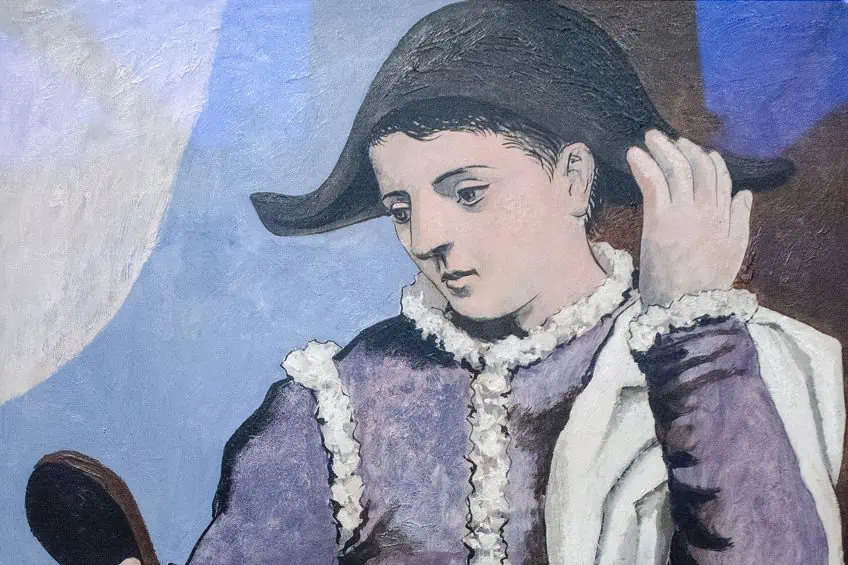Picasso Portraits – The Legend of Cubist Portraiture
Picasso’s influence on the art world cannot be exaggerated. His innovative approach to art inspired countless artists and movements that followed him, and his works continue to be some of the most celebrated and valuable in the world. He is considered a true master of modern art, and his legacy continues to be felt to this day. In this article, we will look at Picasso’s portraits through all the art styles he explored throughout his career, looking at his portraits from the Blue and Rose periods, as well as his Cubist portraits.
The Legend of Pablo Picasso
Pablo Picasso was a famous creative born in Spain. He was alive from the years 1881 to 1973 and is known as one of the most significant and noteworthy artists of the 20th century. He is most famous for his paintings, but also explored sculpting, printmaking, and ceramics, and is known for co-establishing the Cubist art style along with Georges Braque (1882 – 1963).
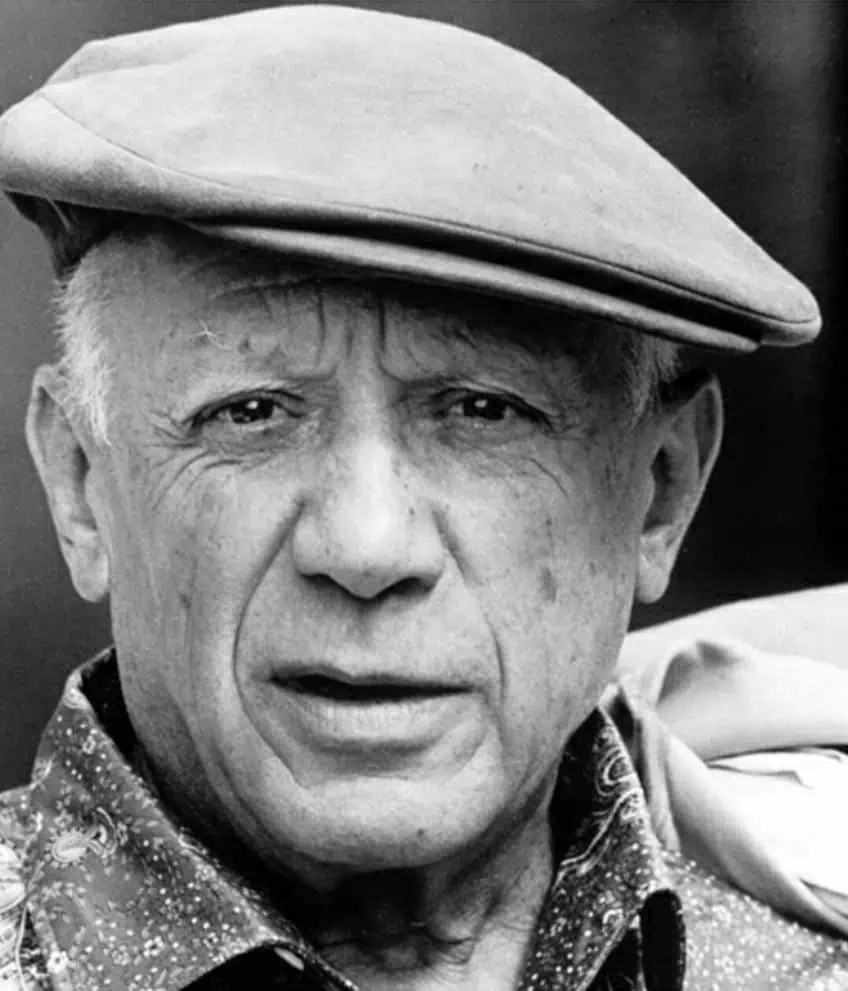
A Brief History of Picasso’s Work
Picasso’s early works were heavily influenced by the Post-Impressionist style of his contemporaries, such as Henri Matisse (1869 – 1954) and Paul Cézanne (1839 – 1906). However, it was his exploration of Cubism that altered the trajectory of modern art forever. Cubism was an avant-garde movement that aimed to depict the world in a new way, emphasizing the geometric forms of objects and breaking them down into smaller, more abstract shapes. Picasso’s iconic work Les Demoiselles d’Avignon (1907) is considered a groundbreaking example of Cubism, as it challenges traditional notions of perspective and representation.
Throughout his professional life, Picasso persisted to test various styles and methods, including Surrealism and Neoclassicism. He was also known for his use of unconventional materials, such as cardboard and found objects, in his sculptures.
Picasso’s Portraits
Among Pablo Picasso’s most notable and celebrated works are his portraits, which are known for their striking and often unconventional depictions of their subjects. Picasso’s portraits spanned many different styles and periods, from his early Realist paintings to his later Cubist and Surrealist works. Throughout his career, he used his portraits to explore the human form and psyche, experimenting with color, form, and composition to create a diverse and fascinating collection of artworks. His portraits continue to be studied and admired today as a testament to his exceptional skill and creativity as an artist.
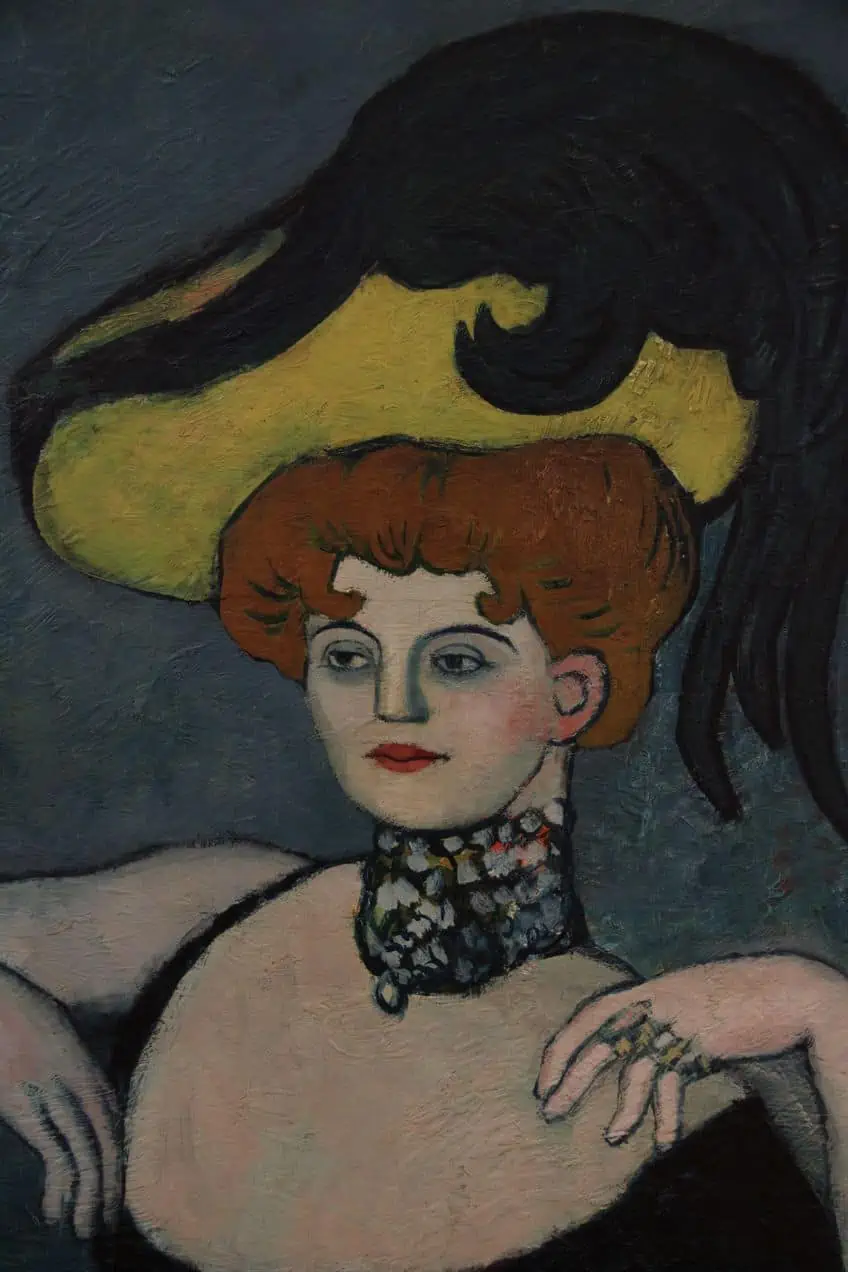
The Early Years: Blue and Rose Periods
In this section of the article, we will take a closer look at the early years of Picasso’s career. We will look at the characteristics of the Blue and Rose periods of this prolific artist’s technical exploration.
As well as look at significant portraits from each of these creative phases.
The Blue Period and Its Characteristics
Pablo Picasso’s Blue Period is widely considered one of the most meaningful and consequential phases in the artist’s career. Spanning from 1901 to 1904, this phase is characterized by the artist’s use of a predominantly blue palette, which was used to convey a sense of melancholy and sadness in his works.
Picasso’s Blue Period was largely influenced by his personal life and the events that were taking place at the time. In 1901, Picasso’s close friend Carlos Casagemas committed suicide, which left a deep impression on the artist. This event, along with his own struggles with poverty and loneliness, inspired Picasso to explore themes of sadness, despair, and isolation in his art.
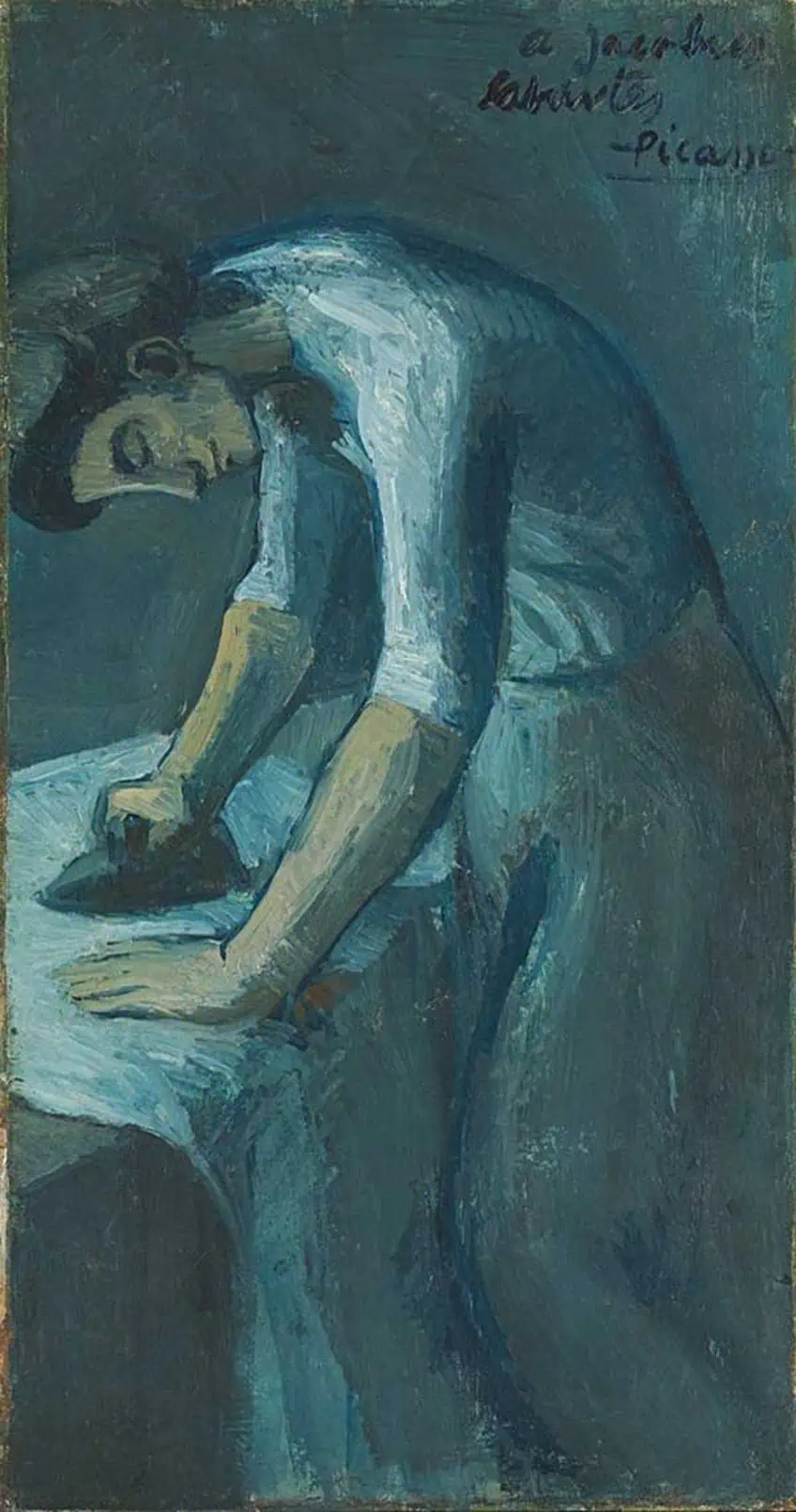
The paintings from Picasso’s Blue Period are marked by their muted blue, gray, and green tones, which are used to create a somber and melancholic atmosphere. The figures in these works are often thin and gaunt, with exaggerated features and elongated limbs that convey a sense of frailty and vulnerability. Many of the subjects in Picasso’s Blue Period paintings are depicted in solitary or isolated settings, emphasizing the feelings of loneliness and alienation that are central to this period.
In addition to its thematic and stylistic characteristics, Picasso’s Blue Period is notable for its influence on the development of modern art. The period was a crucial step in Picasso’s evolution as an artist, as it marked a turning point in his style and technique. The Blue Period paved the way for Picasso’s later Cubist works, which similarly questioned conventional ideas of expression and perspective.
An Example of Picasso’s Blue Period Portraits: The Old Guitarist (1903 – 1904)
| Title | The Old Guitarist |
| Date | 1903 – 1904 |
| Medium | Oil on canvas |
| Dimensions (cm) | 123 x 83 |
| Location | Art Institute of Chicago, Chicago, United States |
One of the most iconic works from Picasso’s Blue Period is The Old Guitarist (1903-1904), which depicts an emaciated old man hunched over his guitar. The painting’s muted blue and green tones, along with the man’s emaciated figure and mournful expression, create a sense of sadness and despair that is typical of this period.
The elongated limbs and exaggerated features of the figure give him a haunting quality, emphasizing his vulnerability and frailty.
The guitar itself serves as a symbol of comfort and solace in the face of hardship, but the man’s downward gaze and hunched posture suggest that even this small source of comfort is not enough to alleviate his suffering. Through its use of color, composition, and symbolism, The Old Guitarist invites the viewer to contemplate the plight of the less fortunate and to reflect on the power of art to provide solace in times of hardship.
The Rose Period and Its Characteristics
Pablo Picasso’s Rose Period, which lasted from 1904 to 1906, is a notable phase in the artist’s career that is characterized by its warm and vibrant color palette. During this period, Picasso’s paintings featured a range of pinks, yellows, and reds, which replaced the cool and muted tones of his earlier Blue Period.
Picasso’s Rose Period was inspired by his new relationship with Fernande Olivier (1881-1966), a model and muse who became his companion during this period.
The artist’s personal life was marked by newfound happiness and contentment, which is reflected in the warm and bright colors of his paintings. The Rose Period is often associated with themes of joy, optimism, and beauty, which stand in stark contrast to the themes of sadness and despair that characterized the Blue Period.
In addition to its aesthetic characteristics, Picasso’s Rose Period is significant for its influence on the evolution of contemporary art. The period marked a turning point in the artist’s style and technique, as he moved away from the somber and muted tones of the Blue Period and embraced a more vibrant and expressive approach to color. The Rose Period paved the way for Picasso’s later Cubist works, which similarly contested standard notions of illustration and viewpoint.
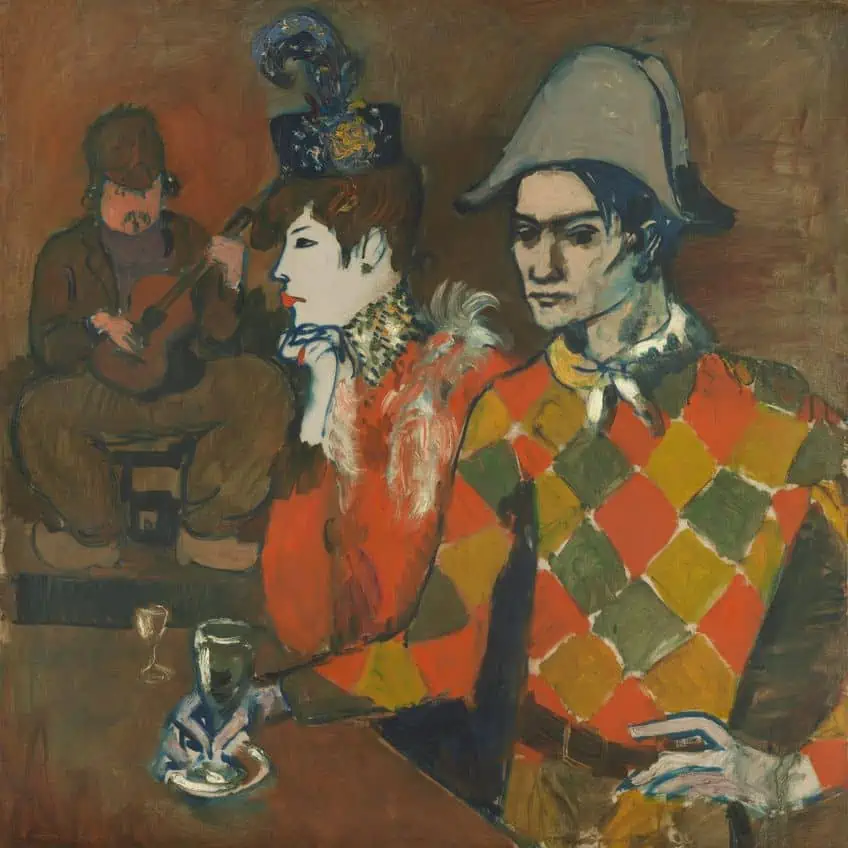
An Example of Picasso’s Blue Period Portraits: Boy with a Pipe (1905)
| Title | Boy with a Pipe |
| Date | 1905 |
| Medium | Oil on canvas |
| Dimensions (cm) | 100 x 81 |
| Location | Private collection |
The figures in Picasso’s Rose Period paintings are often portrayed in theatrical or circus settings, and the works themselves have a playful and whimsical quality. One of the most celebrated paintings from this artist’s Rose period is Boy with a Pipe (1905).
Boy with a Pipe (1905) features a young boy wearing a garland of flowers and holding a pipe in his hand, gazing out at the viewer with a sense of youthful innocence and beauty.
The boy’s rosy cheeks and vibrant clothing, along with the floral motifs that surround him, create a sense of joy and optimism that is typical of the Rose Period. However, there is also a sense of melancholy in the boy’s contemplative gaze and pensive expression, suggesting that there is more to his story than meets the eye. Through its use of color, composition, and symbolism, Boy with a Pipe engages the viewer in contemplation of the fleeting beauty and innocence of youth, and to reflect on the complexities and contradictions of human experience.
Cubism and Beyond
Pablo Picasso’s strict Cubist Period, which lasted from 1907 to 1914, is one of the most innovative and influential phases in the history of modern art. During this period, Picasso and his collaborator Georges Braque (1882 – 1963) developed a revolutionary new style that challenged traditional notions of representation and perspective.
In this part of the article, we will explore the characteristics of Picasso’s Cubist Period and its significance in the development of modern art.
Cubism and Its Characteristics
Cubism is characterized by its use of geometric shapes, multiple viewpoints, and fragmented forms to represent objects in a new and abstracted way. Rather than depicting a single, static viewpoint, Cubist paintings often show multiple angles and perspectives simultaneously, creating a sense of movement and dynamism. This approach to representation was a revolutionary deviation from the conventional, lifelike style that had dominated Western art for centuries.
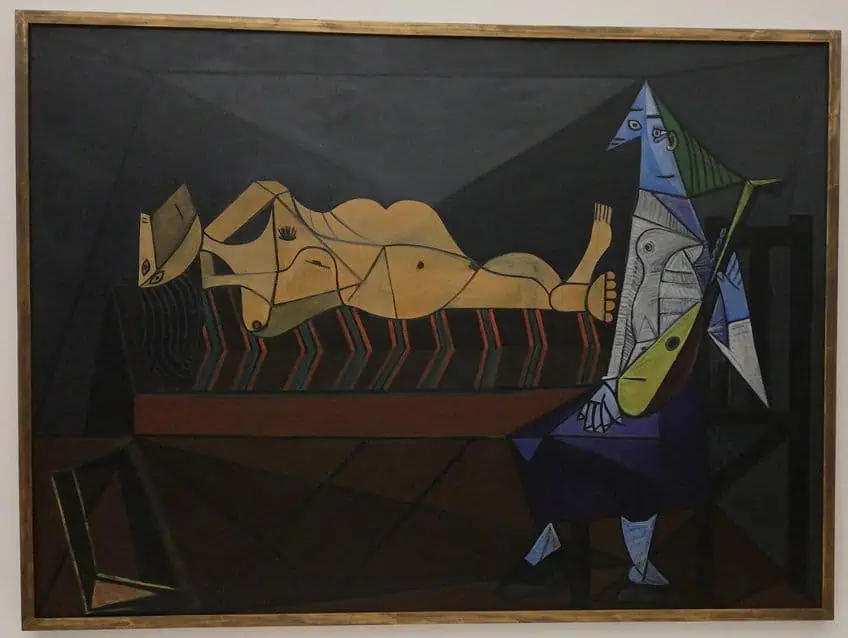
In addition to its formal characteristics, Cubism was also momentous for its impact on the expansion of Western art. The style paved the way for a number of artistic movements that followed, including Futurism, Surrealism, and Abstract Expressionism. By splitting objects into their basic parts and reassembling them in new and unexpected ways, Cubism challenged traditional notions of representation and paved the way for a new era of artistic investigation and innovation.
An Example of Picasso’s Cubist Portraits: Daniel-Henry Kahnweiler (1910)
| Title | Daniel-Henry Kahnweiler |
| Date | 1910 |
| Medium | Oil on canvas |
| Dimensions (cm) | 100.4 × 72.4 |
| Location | Art Institute of Chicago, Chicago, United States |
Daniel-Henry Kahnweiler (1910) is a portrait painting by Pablo Picasso that depicts the artist’s art dealer and close friend, who played a significant role in promoting the development of Cubism. The painting is characterized by its use of fragmented forms and angular lines, which create a sense of dynamism and movement.
Kahnweiler’s face is composed of geometric shapes, including triangles and rectangles, and his body is depicted in a flattened, abstract form.
The use of bold colors and thick black outlines further emphasizes the painting’s graphic quality. Through its innovative style, Daniel-Henry Kahnweiler reflects the spirit of experimentation and artistic innovation that characterized the Cubist movement. At the same time, the painting serves as a tribute to Kahnweiler’s importance as a patron and advocate of modern art, underscoring the close relationship between artists and their supporters during this pivotal moment in art history.
Picasso’s Unique Style
Pablo Picasso’s unique style was shaped by his experimentation with various artistic movements throughout his career. The three distinct periods of his artistic development, the Blue Period, the Rose Period, and the Cubist Period, each played a pivotal role in shaping his style and approach to art.
However, it was Picasso’s ability to combine the characteristics of these periods in his later works that set him apart as a truly innovative and groundbreaking artist.
Picasso’s Distinctive Style in His Portraits
Picasso’s distinctive style is readily apparent in his portrait paintings. Throughout his career, he created a diverse range of portraits that explored a wide variety of themes and subject matter, from personal relationships to social and political issues.
One of the defining features of Picasso’s portraits is his masterful use of color and form. Throughout his career, he experimented with a wide range of color palettes, from the somber blues and grays of his Blue Period to the vibrant pinks and oranges of his Rose Period. He also explored the use of bold, contrasting colors in his Cubist works, creating dynamic and visually striking compositions. In his portraits, Picasso often used color to convey a sense of emotion or mood, with darker or more muted colors used to express sadness or melancholy and brighter or more saturated colors used to convey joy or passion.
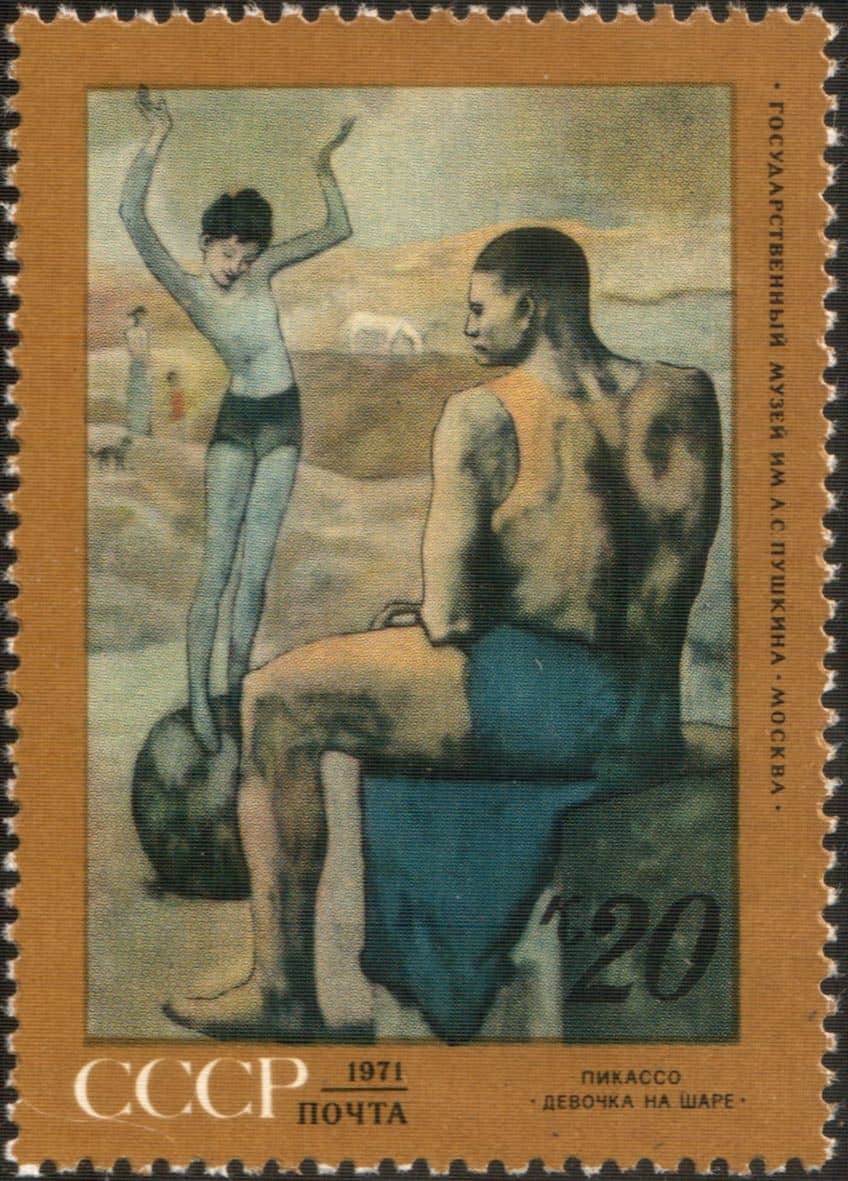
In terms of form, Picasso’s portraits often feature distorted or fragmented figures, with facial features and body parts separated and recombined in unexpected ways. He also frequently used exaggerated or elongated forms to create a sense of distortion or abstraction. These techniques allowed Picasso to convey a sense of emotional intensity or psychological complexity in his portraits, inviting viewers to contemplate the inner worlds of his subjects.
Through his eclectic style and thematic choices in his portrait paintings, Picasso demonstrated his mastery of a wide range of artistic techniques and his ability to synthesize and combine different influences to create something truly innovative and groundbreaking. His portraits continue to captivate and inspire viewers with their unique blend of emotion, beauty, and experimentation.
Beyond Cubism: Eclectic Portraits by Picasso
| Title | The Weeping Woman |
| Date | 1937 |
| Medium | Oil on canvas |
| Dimensions (cm) | 60 x 49 |
| Location | Tate Modern, London, United Kingdom |
One example of Picasso’s distinctive style in his portraits is The Weeping Woman (1937), which features angular, fragmented forms and a vivid color palette that is characteristic of his Cubist and Expressionist influences. The Weeping Woman is a painting of a woman crying in profile, painted using Cubist perspective distortion.
The painting’s subject matter is about human sorrow, loss, and personal and collective tragedy in response to the bombing in Spain at the time.
The color and light are somber, with a gray-toned woman apart from more colorful surroundings, creating a feeling of being trapped in despair. The motion of the brushstrokes and textured surface are highly emotive, with fragmented and disjointed forms conveying a sense of vitality and vibrancy. The perspective is distorted, adding to the feeling of unease and disorientation, and the painting is rich in symbolism, reflecting the chaos and violence of the war. Overall, the painting is a potent illustration of the consequences of war on humanity and personal lives.
Portrait of Dora Maar (1937)
| Title | Portrait of Dora Maar |
| Date | 1937 |
| Medium | Oil on canvas |
| Dimensions (cm) | 92 × 65 |
| Location | Musée Picasso, Paris, France |
In contrast, Portrait of Dora Maar (1937) demonstrates a more restrained and elegant style that draws on Picasso’s earlier Rose Period. The painting features soft, pastel colors and delicate, curvilinear forms that imbue the portrait with a sense of refinement and beauty. The portrait is notable for its subtle use of line and texture, which creates a sense of depth and complexity.
The painting portrays the artist’s beloved and inspiration, Dora Maar. The portrait is a striking and emotive representation of Maar, with her face painted in profile and her eyes closed in contemplation or sorrow. Picasso’s use of Cubist perspective distortion is evident, with the face painted from multiple viewpoints and angles.
The subject matter of the painting is complex, with the portrait depicting Maar as a multifaceted and enigmatic figure.
The painting is thought to reflect the tumultuous nature of Picasso and Maar’s relationship, as well as the broader socio-political climate in Europe at the time. The portrait captures the complexity of human emotion, with Maar’s expression conveying a sense of both vulnerability and strength. In terms of color and light, Picasso uses a muted palette, with shades of gray, blue, and green dominating the portrait. The light is diffuse, adding to the overall feeling of introspection and contemplation. The surface of the painting is rough and impasto, with assertive painterly marks and excessive shapes adding to the sense of energy and liveliness.
The perspective in the painting is unconventional, with Picasso using foreshortening and spatial compression to create a sense of depth and dimensionality. Maar’s face is shattered and put together loosely by Picasso’s brush with sharp gradients and bends that communicate a sense of action and strain. In terms of line and shape, Picasso utilizes a mixture of techniques to create a sense of suspense and distress. The lines in the painting are jagged and irregular, with sharp angles and curves that convey a sense of motion and energy. The forms in the painting are cut up and disorganized, with elements that seem to float in space and overlap in a chaotic manner.
Le Rêve (1932)
| Title | Le Rêve |
| Date | 1932 |
| Medium | Oil on canvas |
| Dimensions (cm) | 130 x 97 |
| Location | Private collection of Steven A. Cohen |
Finally, Le Rêve (1932) demonstrates Picasso’s ability to combine elements of different periods to create a unique and innovative style. The painting features a fragmented and distorted portrait of the artist’s lover, Marie-Thérèse Walter, which is rendered in a blend of Cubist and Surrealist styles. Le Rêve, also known as The Dream, portrays a woman reclining on a chair in a state of dream-like bliss. The woman’s face is partially hidden by her arm, which is raised to cover her eyes, adding to the sense of mystery and privacy in the painting.
The woman’s body is depicted in a curvaceous and sensual manner, with Picasso using bold, sinuous lines to emphasize her femininity.
Her hair is rendered in a bright, fiery orange, adding a sense of energy and vitality to the composition. The background of the painting is abstract, with swirling shapes and colors that suggest a dream-like, surreal landscape. The colors used in the artwork are rich and assertive, with shades of red, blue, and yellow dominating the composition.
Picasso’s use of color and form in Le Rêve is highly expressive and emotional. The painting captures the sense of intense pleasure and desire that is often associated with the dream state. The woman’s closed eyes and relaxed posture suggest a sense of abandonment and surrender as if she is completely lost in the pleasure of the moment.
The painting also reflects Picasso’s interest in the Surrealist movement, which was characterized by a fascination with the unconscious mind and the irrational. The dream-like quality of the painting, combined with the abstract shapes and colors in the background, creates a sense of disorientation and mystery that is typical of Surrealist art.
Legacy and Impact
Overall, Picasso’s legacy and influence on the art world are unmistakable. His contributions to modern art, particularly in the areas of Cubism and Surrealism, have cleared the path for numerous artists who have followed in his footsteps. His portraits continue to be celebrated for their emotional strength and their capacity to seize the essence of the sitter.
His influence can be seen in the work of contemporary artists from around the world, demonstrating the enduring relevance of his contributions to the art world.
Picasso’s Lasting Impact on the Art World
One of the key ways in which Picasso has impacted the art world is through his role in the development of modern art. His innovations in the areas of Cubism and Surrealism challenged traditional notions of representation and paved the way for new approaches to art-making. Picasso’s influence can be seen in the work of countless artists who followed in his footsteps, from the Abstract Expressionists of the mid-twentieth century to contemporary artists working today.
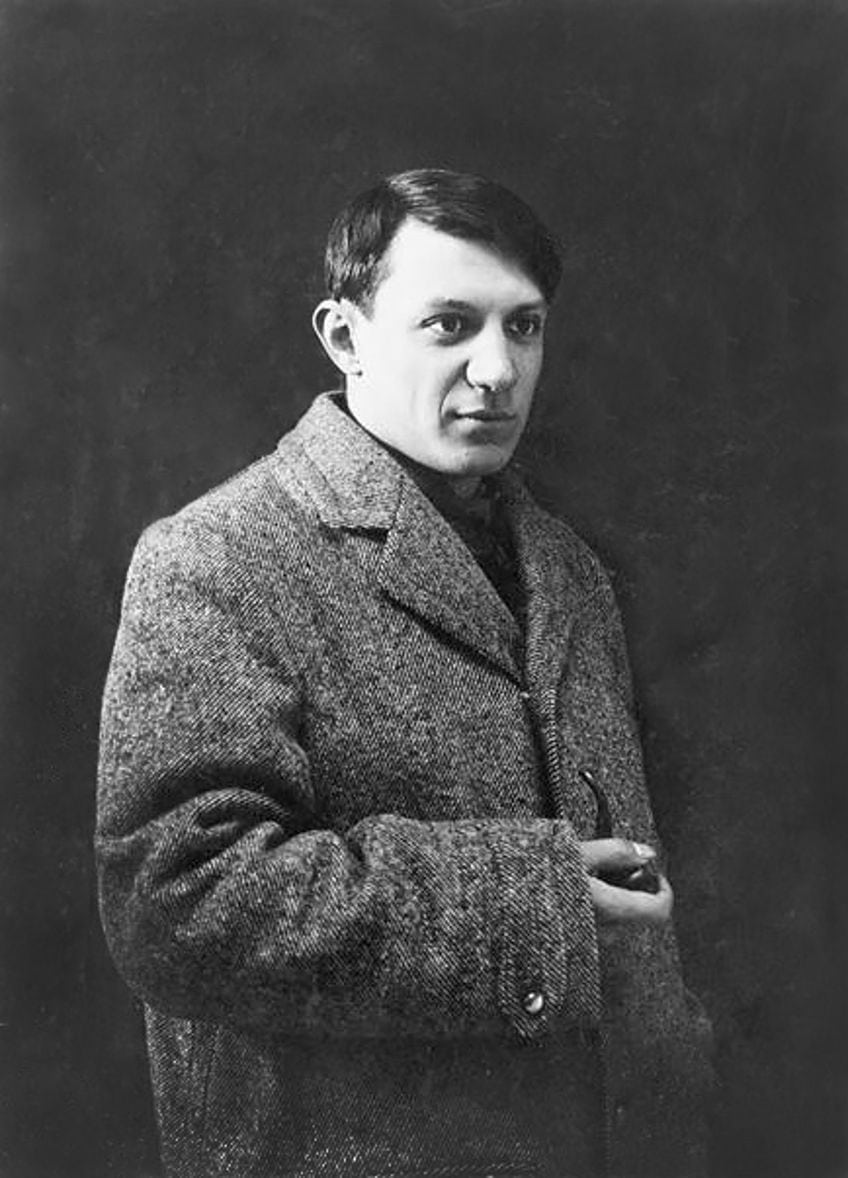
The Continued Influence of Picasso’s Portraits
In particular, Picasso’s portraits have had a lasting impact on the art world. His innovative approach to portraiture, which emphasized psychological complexity and formal experimentation, revolutionized the genre and set the stage for future developments in figurative art.
Picasso’s portraits continue to be celebrated for their emotive power and their ability to capture the inner life of the sitter.
Contemporary Artists Influenced Picasso
Many contemporary artists have been influenced by Picasso’s work, drawing on his innovations in form and subject matter to create new and exciting pieces. One such artist is the American painter Kerry James Marshall (1955 – Present), who has cited Picasso as a major influence on his work. Marshall’s paintings often feature bold, vibrant colors and fragmented forms, echoing Picasso’s Cubist experiments. Another artist who has been influenced by Picasso is the German painter Gerhard Richter (1932 – Present), whose abstract works draw on Picasso’s interest in the interplay between representation and abstraction.
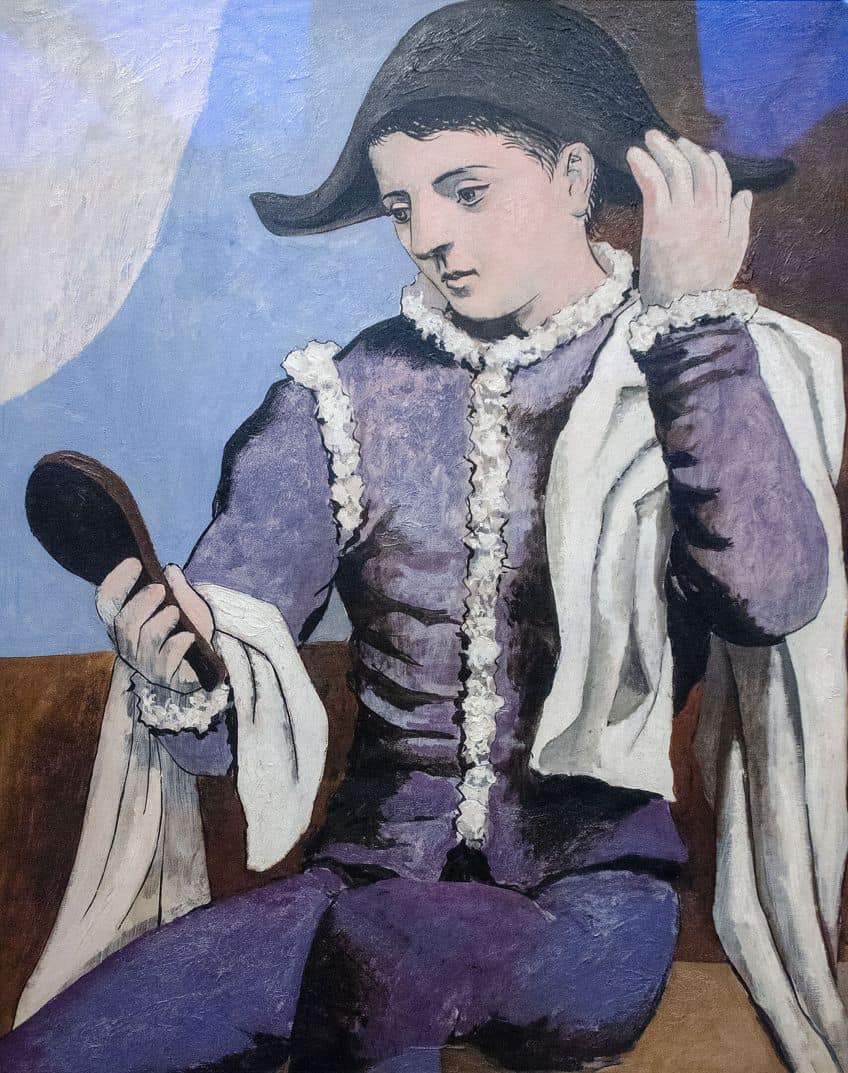
In this article, we have explored the life and work of the legendary artist Pablo Picasso, examining his various artistic periods and the innovations he brought to the world of art. From his early Blue Period to his later experimentation with Cubism and Surrealism, Picasso’s work continues to captivate and inspire audiences around the world. His contributions to the art world are undeniable, and his legacy can be seen in the work of countless artists who have followed in his footsteps. Picasso’s influence on portraiture, in particular, is significant, as he revolutionized the genre with his innovative approach to form and subject matter. Overall, Picasso’s impact on the art world is enduring, and his contributions to modern art continue to be celebrated and studied today.
Frequently Asked Questions
What Was Picasso’s Blue Period?
Picasso’s had multiple experimental phases in his life, one of the most well-known artistic phases he went through is the Blue Period. The Blue Period was a significant and influential period in the artist’s career. It was characterized by a distinctive use of blue tones to convey a sense of melancholy and sadness and was marked by the artist’s exploration of themes of isolation, despair, and alienation. The Blue Period was a key step in Picasso’s artistic development and had a lasting impact on the development of modern art.
What Was Picasso’s Rose Period?
Another important painting period Picasso went through was his Rose Period. This was a significant and influential phase in the artist’s career. It was characterized by its warm and vibrant color palette, as well as its playful and whimsical themes. The Rose Period reflected the artist’s personal and artistic growth and marked a crucial step in his evolution as a painter. Its lasting impact on the development of modern art is a testament to its enduring significance and influence.
What Was Picasso’s Cubist Period?
A crucial chapter in the history of modern art was Picasso’s Cubist Period. It was characterized by its use of geometric shapes, multiple viewpoints, and fragmented forms to represent objects in a new and abstract way. The period marked a turning point in the development of modern art, and paved the way for a wide range of artistic movements that followed. Its lasting impact on the world of art is a testament to its enduring significance and influence.
Nicolene Burger, a South African multimedia artist and creative consultant, specializes in oil painting and performance art. She earned her BA in Visual Arts from Stellenbosch University in 2017. Nicolene’s artistic journey includes exhibitions in South Korea, participation in the 2019 ICA Live Art Workshop, and solo exhibitions. She is currently pursuing a practice-based master’s degree in theater and performance. Nicolene focuses on fostering sustainable creative practices and offers coaching sessions for fellow artists, emphasizing the profound communicative power of art for healing and connection. Nicolene writes blog posts on art history for artfilemagazine with a focus on famous artists and contemporary art.
Learn more about Nicolene Burger and about us.
Cite this Article
Nicolene, Burger, “Picasso Portraits – The Legend of Cubist Portraiture.” artfilemagazine – Your Online Art Source. October 2, 2023. URL: https://artfilemagazine.com/picasso-portraits/
Burger, N. (2023, 2 October). Picasso Portraits – The Legend of Cubist Portraiture. artfilemagazine – Your Online Art Source. https://artfilemagazine.com/picasso-portraits/
Burger, Nicolene. “Picasso Portraits – The Legend of Cubist Portraiture.” artfilemagazine – Your Online Art Source, October 2, 2023. https://artfilemagazine.com/picasso-portraits/.


